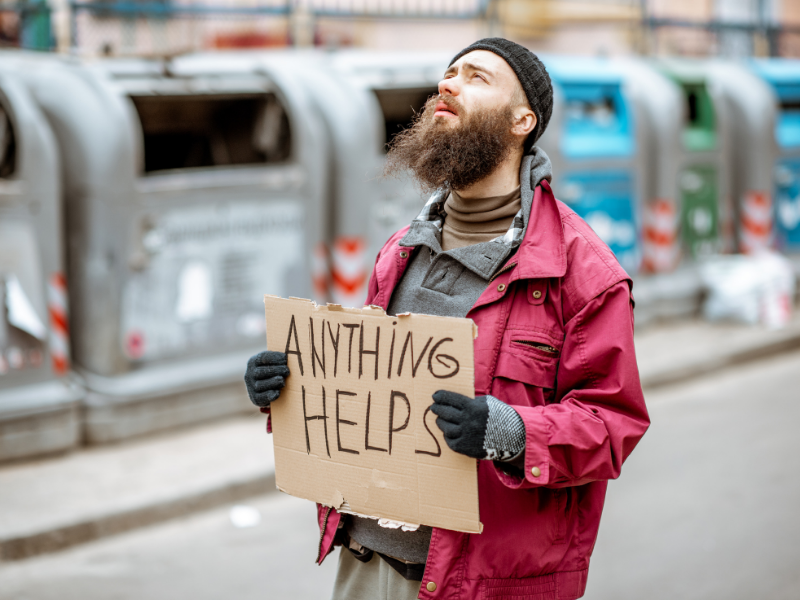
The Top 5 Recommendations to the Feds on Economic Mobility
The Top 5 Recommendations to the Feds on Economic Mobility
By Erik Randolph
If you had the opportunity to tell federal agencies what they need to do to help low-income people improve their economic circumstances, what would you tell them?
This is not an arbitrary question. It was formally asked by the current administration in Washington, D.C.
A New Council on Economic Mobility
The U.S. Department of Health and Human Services (HHS) is leading the development and establishment of an interagency Council on Economic Mobility. This council will include the heads, or their delegates, of the U.S. Departments of Agriculture, Education, Labor, Housing and Urban Development, and the Treasury. It will also include the heads of the Social Security Administration and the Council of Economic Advisors.
The purpose of the Council is to find areas where the participating agencies can collaborate for a very important purpose: “to promote family-sustaining careers and economic mobility for low-income Americans … and help individuals sustain their economic success.” Note that all these departments administer important welfare and workforce-development programs.
Last July, HHS solicited comments to 15 questions to help develop this new council. What should be its priorities? What barriers do individuals face? How are welfare cliffs impacting individuals?
Relying on its experience with providing services, working with other service providers, and research, the Georgia Center for Opportunity (GCO) submitted recommendations to this request on October 2, 2020.
GCO’s Top Recommended Priorities
Below are GCO’s top recommendations for what the council’s priorities ought to be.
Priority #1: Eliminate Marriage Penalties
Marriage penalties make number one on our list.
The strong correlation between marriage and prosperity is well-researched and undeniable. Research also demonstrates overwhelmingly that a stable home with married parents benefits children in many ways, including emotional stability, educational achievement, and future income. Unfortunately for many, the idea of healthy marriage is something desirable but unattainable for themselves. A strong marriage has It’s becoming a luxury for many, and they are losing out on which denies too many the economic and otherwise fulfilling benefits.
Recently, the Office of Family Assistance at HHS sponsored the study Marriage Penalties in Means-Tested Tax and Transfer Programs: Issues and Options, authored by Bradford Wilcox, Ph.D., Chris Gersten, and Jerry Regier, Ph.D. This study does an excellent job at detailing current research in the area and discusses potential solutions. By the way, GCO gave input to the authors of the study.
Priority #2: Eliminate Welfare Cliffs
As just indicated, the welfare system has embedded disincentives that can discourage recipients from seeking employment, working additional hours, or accepting pay increases. And our research in this area has been recently corroborated by a National Bureau of Economic Research paper written by five economists, including two who work for the Federal Reserve Bank of Atlanta.
Many of these disincentives are the direct result of federal government policies and are found within the tax code and various eligibility and benefit determination rules of means-tested welfare programs.
Priority #3: Sponsor Research and Financial Modeling to Solve the Big Problems
In a prior blog , I wrote about how welfare programs and the tax code can be barriers by creating disincentives to advance economically. Also, a prior study illustrated how marriage penalties are further barriers.
Well, these problems are complex, and the solutions have perplexed policymakers for years. Therefore, it is important for continued research to come up with the best solutions.
By the way, GCO is well positioned to help examine these issues. We have studied both the problems and offered potential solutions.
Priority #4: Promote Work-First Policies
Research and experience show that promoting work first for those applying for welfare assistance—as opposed to seeking education and training first—usually works better in helping them secure meaningful employment in the long run.
A work-first policy does not mean that education and training are forsaken. It simply recognizes the reality that connecting people to real jobs in the economy gives them a foothold in the workforce where further skill development and training can often be accomplished while they are holding down a job and earning earned income.
Priority #5: Look for ways to reduce regulatory barriers
The federal government should review its policies to make sure they do not make it harder for people to get jobs or start job-creating businesses. This recommendation falls under the broad heading of “getting government to help facilitate job growth, not hinder it.”
So what do you think? Should these be the recommended priorities for the new federal council? Are there other priorities you would have included? Post your comments below.
Erik Randolph is Director of Research at the Georgia Center for Opportunity. This blog reflects his opinion and not necessarily that of the Georgia Center for Opportunity.
DISINCENTIVES FOR WORK AND MARRIAGE IN GEORGIA’S WELFARE SYSTEM
Based on the most recent 2015 data, this report provides an in-depth look at the welfare cliffs across the state of Georgia. A computer model was created to demonstrate how welfare programs, alone or in combination with other programs, create multiple welfare cliffs for recipients that punish work. In addition to covering a dozen programs – more than any previous model – the tool used to produce the following report allows users to see how the welfare cliff affects individuals and families with very specific characteristics, including the age and sex of the parent, number of children, age of children, income, and other variables. Welfare reform conversations often lack a complete understanding of just how means-tested programs actually inflict harm on some of the neediest within our state’s communities.







